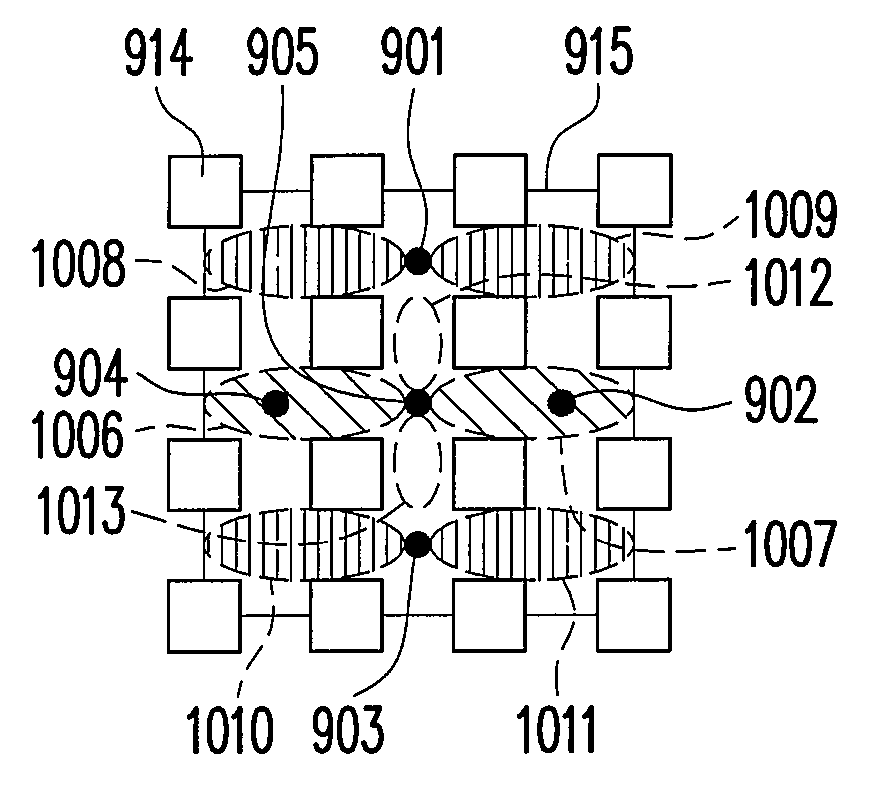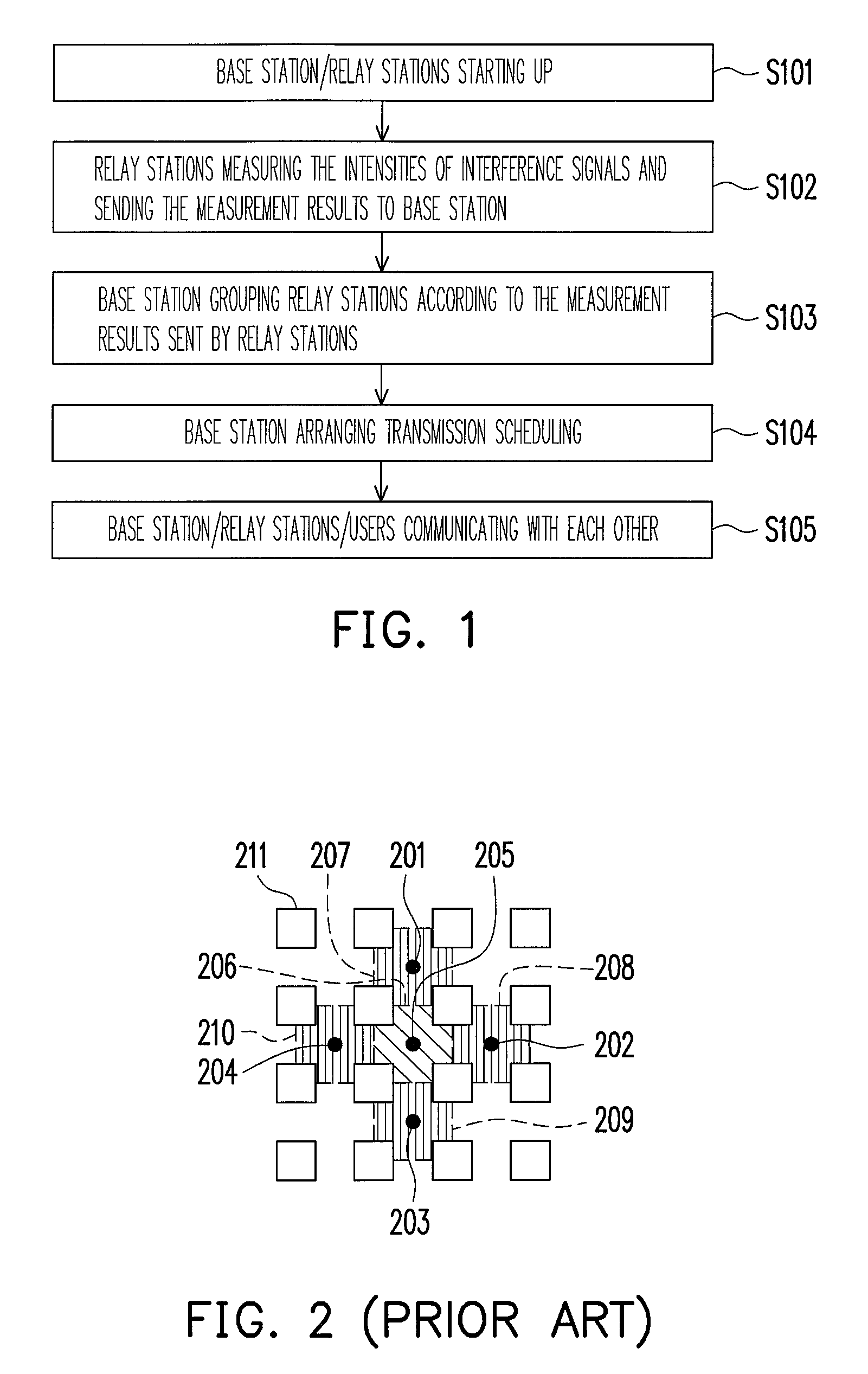Scheduling method for wireless multihop relay communication systems and system thereof
a wireless multi-hop relay and communication system technology, applied in the direction of repeater circuits, frequency-division multiplexes, transmission monitoring, etc., can solve the problems of poor link quality, foregoing users cannot perform high-speed data transmission, and foregoing users cannot achieve high-speed data transmission, so as to improve the capacity of the system and reduce interference inside a single cell and between adjacent cells.
- Summary
- Abstract
- Description
- Claims
- Application Information
AI Technical Summary
Benefits of technology
Problems solved by technology
Method used
Image
Examples
Embodiment Construction
[0037]The following embodiments will be described with a Manhattan-like environment as an example, and those having ordinary knowledge in the art should be able to implement the present invention in any other environment according to the spirit of the present invention and the descriptions of the following embodiments. In following embodiments, interference level is weakened by spatial separation produced by the shadowing effect of surrounding buildings in a Manhattan-like environment.
[0038]FIG. 8 illustrates the layout of relay stations in a Manhattan-like environment according to an embodiment of the present invention. Referring to FIG. 8, a microcell covers 690*690 square meters, and the base station 805 is disposed at a crossroad and four relay stations 801, 802, 803, and 804 are disposed at intersections of the two crossed streets with other streets in four directions, which is, the relay stations 801˜804 are disposed at the intersections of the line of sight (LOS) and the non ...
PUM
 Login to View More
Login to View More Abstract
Description
Claims
Application Information
 Login to View More
Login to View More - R&D
- Intellectual Property
- Life Sciences
- Materials
- Tech Scout
- Unparalleled Data Quality
- Higher Quality Content
- 60% Fewer Hallucinations
Browse by: Latest US Patents, China's latest patents, Technical Efficacy Thesaurus, Application Domain, Technology Topic, Popular Technical Reports.
© 2025 PatSnap. All rights reserved.Legal|Privacy policy|Modern Slavery Act Transparency Statement|Sitemap|About US| Contact US: help@patsnap.com



